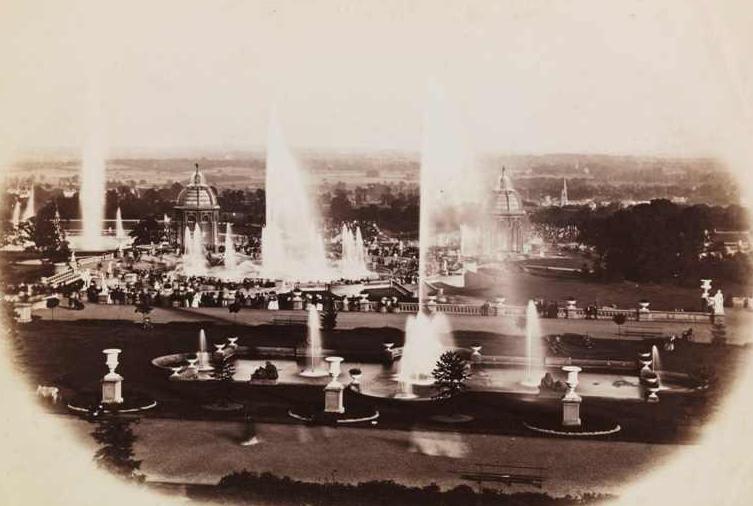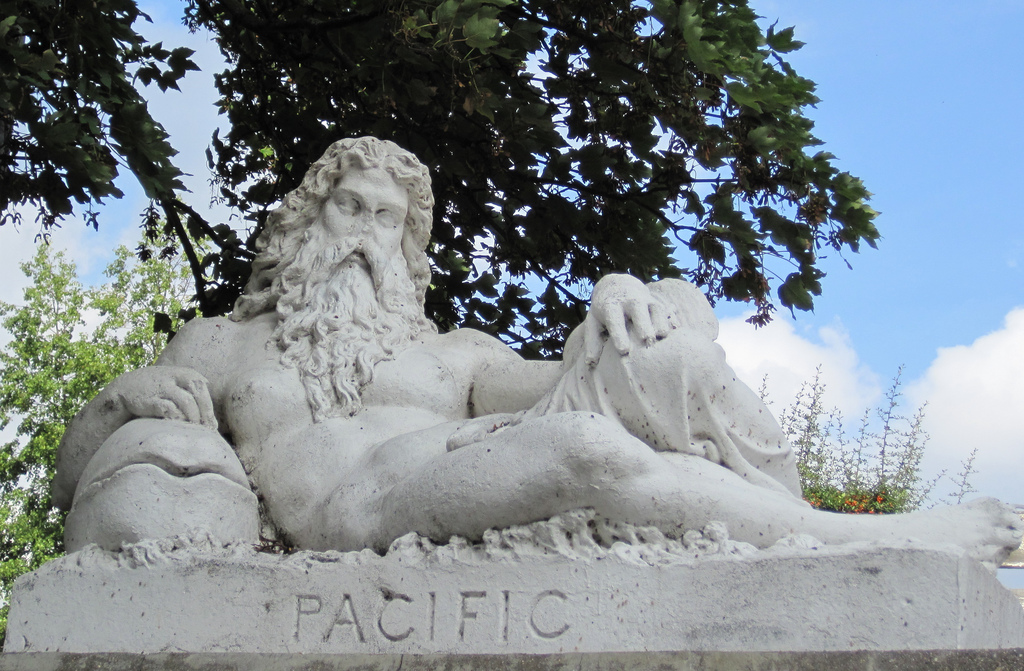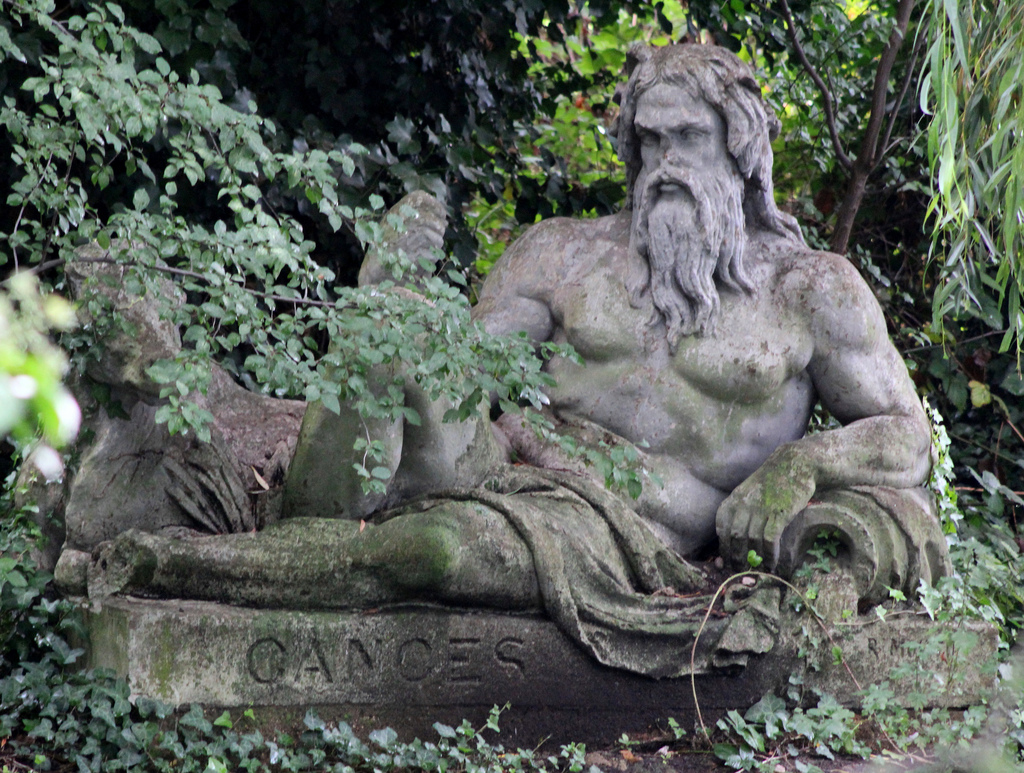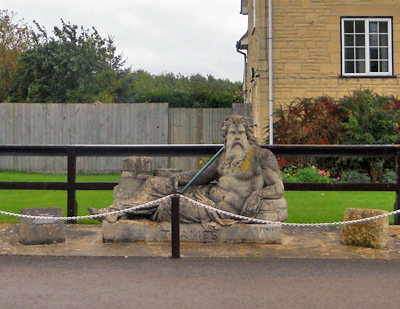
Wherever I go I seem to stumble across stuff that draws me back to the subject of the Thames. This is especially true right now as I’ve been spending the last few weeks sifting through material and ideas for a Thames-related book, which means I’m constantly on the lookout for interesting riverine images and histories. Last week I was mooching around Drawn by the Light – an exhibition of historic photographs from The Royal Photographic Society Collection at the Science Museum, when my curiosity was piqued by this photograph by Philip Henry Delamotte (1821-89) [above]. Delamotte was commissioned to photograph the move of Crystal Palace, after the Great Exhibition had closed, from Hyde Park to Sydenham between 1852 and 1854, and this photograph shows the new water fountains laid out at the new south-east London site.
These new pleasure gardens were peppered with statuary, and I already knew that an ornamental lake on the lower terrace was embellished with four figures cast in Portland Stone Cement after models by Raffaelle Monti (1818-81). These were river gods representing the Ganges, Nile, Amazon – and of course, Thames. On the opposite side of the terrace an identical lake was ornamented with sea gods – Indian, Atlantic, Arctic and Pacific. The Crystal Palace was destroyed by fire in 1936 and the site was eventually cleared, with most of the statues sold off in the late 1950s. It’s difficult to uncover the fate of all the river and sea gods today, but there are three out of eight that I’ve tracked down so far. First there’s Pacific. He can be found at the edge of a council estate in Dacres Road, Forest Hill – so he hasn’t travelled too far from his original location.
Pacific is the only sea god I’ve located. Ganges has made a longer journey, but only as far as Blackheath near Greenwich where he reclines unmolested on an island in an ornamental lake at Brooklands Park – previously part of a private garden.
But most satisfying of all – well, as far as I’m concerned anyway, is the survival of Father Thames. The Thames Conservancy purchased him in 1958 and sited him at the rather lonely location of Trewsbury Mead, known as Thames Head which is arguably the source of the Thames. It’s also the official start of the Thames Pathway – ‘from source to sea’. Unfortunately the statue was the victim of vandalism here – all those overexcited hikers high on Dubbin no doubt. To put an end to these rude attacks, Father Thames was moved by lorry to St John’s Lock in Lechlade, a town at the southern edge of the Cotswolds in Gloucestershire – and the highest point at which the Thames is navigable. Here he sits today, resplendent and in full view of the lock keeper.
Delamotte’s albumen print of c.1852 clearly shows Father Thames’ original location, taking pride of place among the world’s greatest rivers, seas and oceans. If anybody has any idea of what became of Nile, Amazon, Indian, Atlantic and Arctic – please let me know.











This is a wonderful post. I am writing a master’s thesis on a painting in which I am aligning the pose of the main figure in the work to the iconography of Father Thames and river gods in general. Since I am arguing for it as a response to the Indian Mutiny, the image of Monti’s Ganges river god is especially great to see!
A Totally Thames 2016 commission, Floating Dreams is a compelling, large-scale installation situated in the centre of the River Thames by Ik-Joong Kang.
There are some diverting ideas, but, in sum, the whole thing is a very odd endeavour – particularly given that most of these bridges already have lighting schemes of their own, from the twinkling fairytale bulbs of Chelsea Bridge to the bascules of Tower Bridge illuminated as majestic purple rockets.